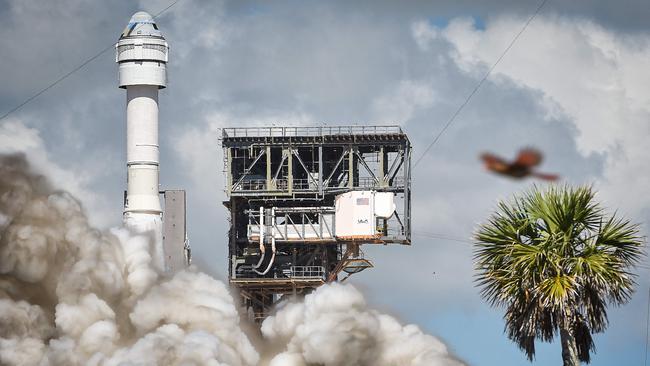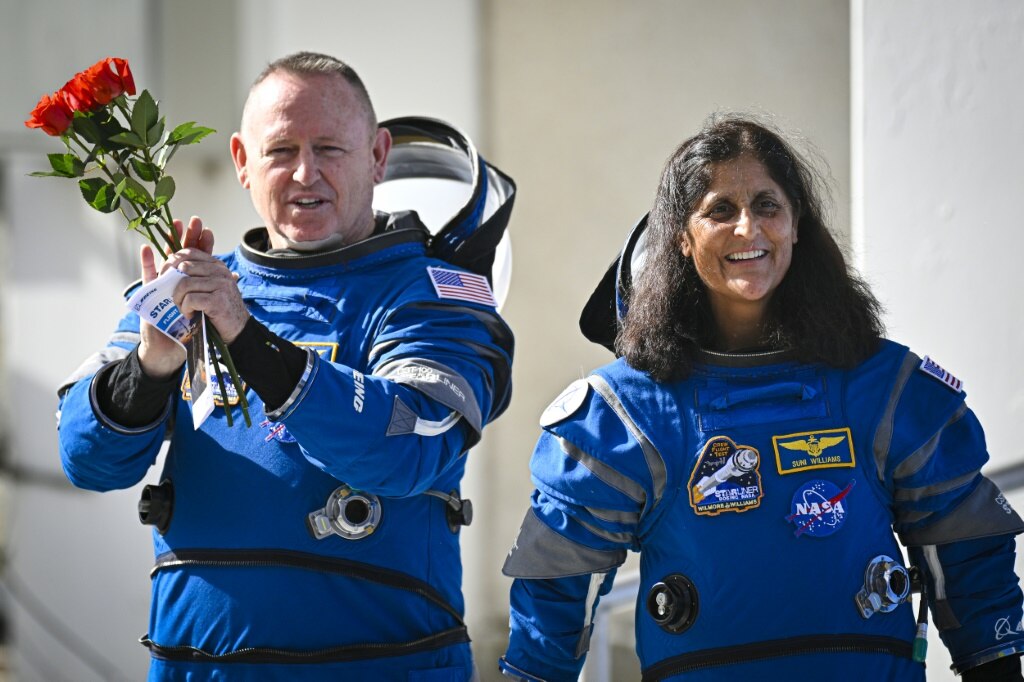Boeing’s Starliner launches NASA astronauts after setbacks, delays
Boeing’s Starliner spacecraft has blasted off on its first astronaut mission, a years-in-the-making flight that had been delayed several times.
Boeing’s Starliner spacecraft has blasted off on its first astronaut mission, a years-in-the-making flight that the company and the National Aeronautics and Space Administration had delayed several times.
The space capsule, carrying astronauts Barry Wilmore and Sunita Williams, was launched Wednesday at 10.52am ET (12.52am Thurs AEST) from Cape Canaveral, Florida. A NASA livestream showed Starliner shooting toward space on top of a rocket.
“Let’s put some fire in this rocket,” Wilmore said moments before lift-off. The mission appeared to proceed smoothly, with the rocket and Starliner itself hitting key milestones following the launch.
About 30 minutes into the flight, Starliner completed a maneuver called an orbital-insertion burn, setting Starliner onto a trajectory to reach the space station.
Wednesday’s flight is a final test before Boeing’s gumdrop-shaped spacecraft can be certified to begin regularly ferrying NASA crews to and from the International Space Station.
Starliner’s inaugural crewed mission was previously planned for early May but had been delayed multiple times because of problems that emerged on the vehicle, the United Launch Alliance-built Atlas V booster rocket and a ULA ground system.
First, a problem with a valve on ULA’s rocket prompted a launch delay. ULA replaced that component. Then engineers spent time studying issues with Starliner itself, including a small and isolated helium leak, before looking to launch this past weekend.
About four minutes before Saturday’s planned lift-off, the flight was scrubbed because of a glitch in a ground system that automatically orchestrates several launch functions.
NASA has said ULA traced the problem to a faulty power unit and had replaced equipment, clearing the way for Wednesday’s launch.
Boeing has been working toward transporting astronauts on Starliner for years. In 2014, NASA hired Boeing and SpaceX to develop vehicles for astronaut missions to and from the space station.
For Boeing, which helped propel U.S. space exploration during the Apollo moon missions, successfully completing the crewed mission on Starliner would bring it closer to finally delivering on its obligations to NASA. Elon Musk’s SpaceX flew its first astronaut mission for the agency four years ago and has been handling those flights for the agency since then.
Boeing has run up against various challenges with Starliner over the years, including problems with software coding and stuck valves. The company has reported $1.4 billion in accounting losses tied to Starliner’s development.

Starliner is set to dock with the ISS on Thursday. Wilmore and Williams, experienced former Naval aviators who have traveled to space before, are slated to stay on the International Space Station for roughly a week.
In a March interview, Wilmore said it is always better to catch technical issues with spacecraft before launch. “You don’t want to be in space wishing you’re on the ground,” he said.
SpaceX has flown NASA astronauts on eight operational missions to the space station so far. The agency has another six of those flights booked with the company, the next set for August.
Should Boeing win NASA certification for Starliner – deeming the vehicle ready for regular flights – the company is under contract with NASA to conduct six more crewed missions to the ISS.
Dow Jones







To join the conversation, please log in. Don't have an account? Register
Join the conversation, you are commenting as Logout